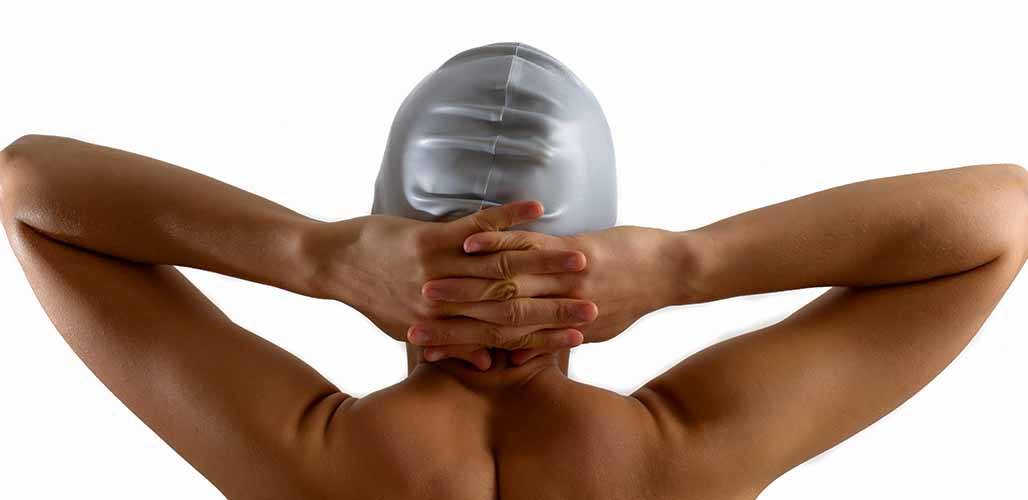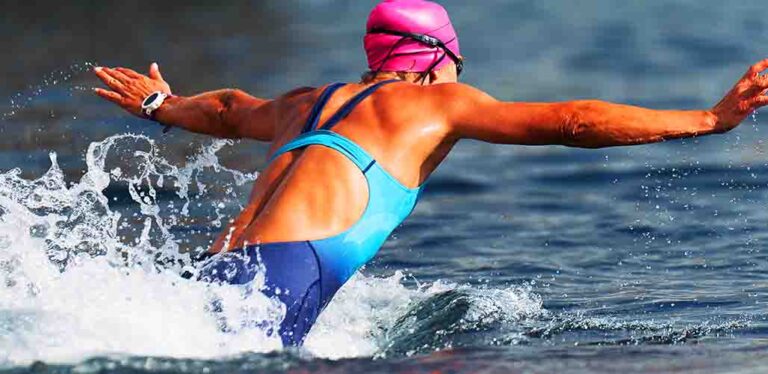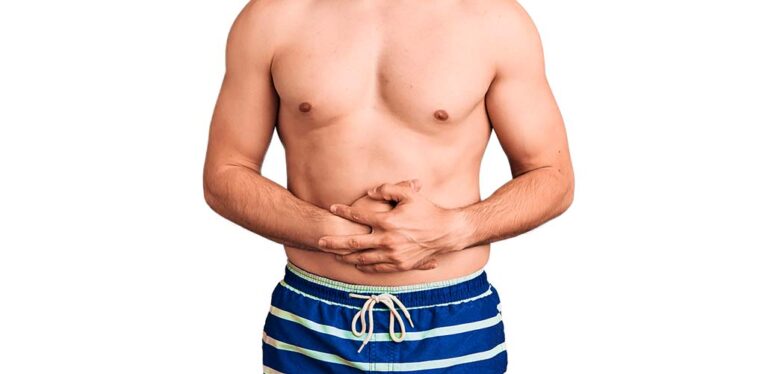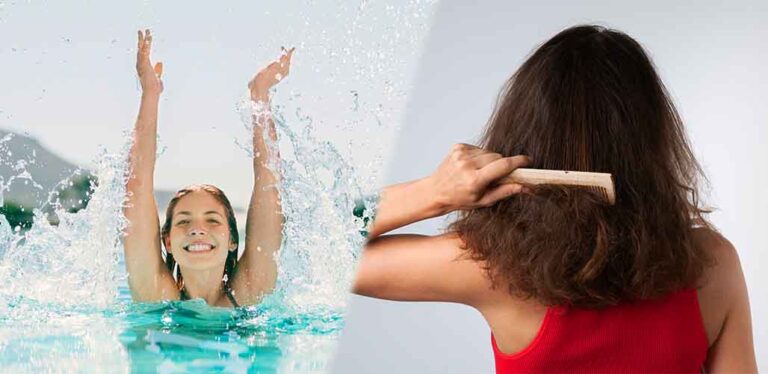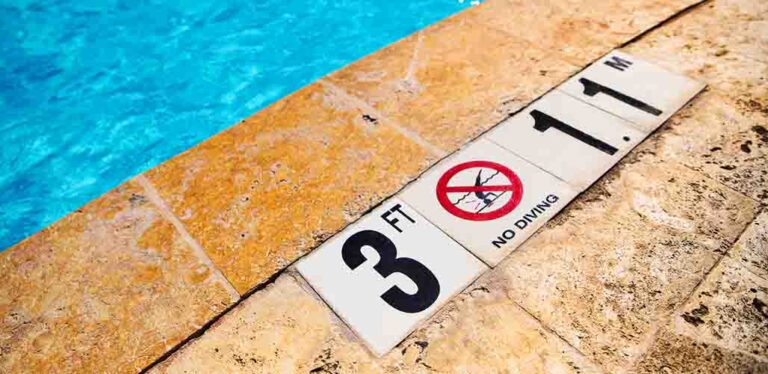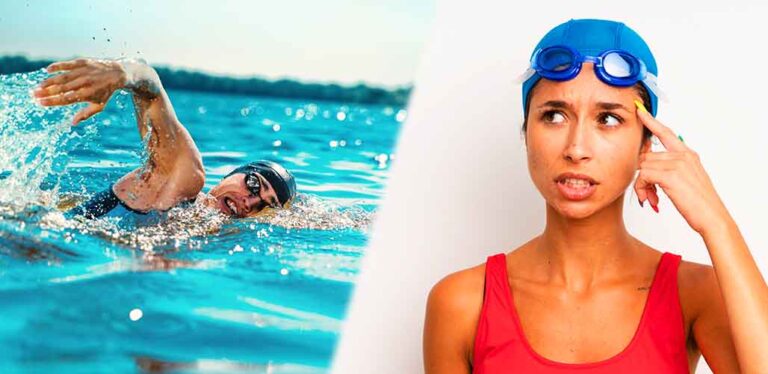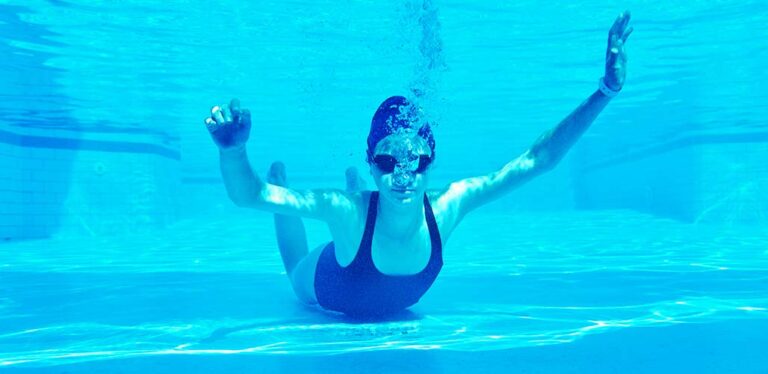Why Do Swimmers Have Bad Posture?
Why do swimmers have bad posture? I always imagined swimmers to have the ideal athletic body – outstanding mid-back muscular width, long and slim limbs, and a low body fat percentage. But have you ever heard of swimmer’s slouch? This is something that competitive swimmers suffer from, poor posture! A somewhat hunched-over posture happens when the chest muscles tense and shorten, and the back muscles extend. It is especially frequent among those who swim primarily face down in the water. In this article, I will look at the reasons for bad posture among frequent swimmers, why it happens and what you can do to prevent it from happening to you. Keep reading to find out more!
Contents
- Why do swimmers have bad posture?
- How to correct poor posture as a swimmer
- Is swimming good or bad for posture?
- Is there a swim stroke that improves posture?
- Other characteristics of a swimmer’s body
- Bad posture or scoliosis?
Why Do Swimmers Have Bad Posture?
As I’ve already mentioned, bad posture in swimmers is most often called swimmer’s slouch. But, what does this actually mean? And how much swimming do you need to do to get this issue?
If you visit your local pool from time to time, maybe a couple of times a month, your bad posture probably results from something other than swimming. The term “swimmer’s slouch” refers to high-level swimmers with lousy posture caused by muscle imbalance. If you watch competitive swimmers, you will notice that some have a somewhat slumped stance.
Front crawl and other strokes that demand you to be on your stomach frequently lead to swimmers developing a slouch. Ongoing repetition of these swim strokes leads to chest muscles tightening and back muscles lengthening, gradually pulling the swimmer’s posture forward into a hunched position. If you are a strong swimmer and you have bad posture, there are things you can do to get rid of it.
How to Correct Your Poor Posture as a Swimmer
The first step to improving swimming posture is stretching. Laying on your back while holding a foam roller perpendicular to your spine is an ideal starting stretch. Squeeze your shoulder blades together and down while keeping your hands flat on your tummy. Using the foam roller, move your body up and down while maintaining this “squeeze.” Roll from top to bottom of your spine.
If your lats and pecs get overdeveloped, they will pull your shoulders forward and round your upper back. To combat this, lay on your back with the foam roller going vertically up your spine, just below your head. Starting with your arms at your side, squeeze your shoulder blades together and slightly downward.
Slowly move your hands along the floor until you feel a tiny stretch in the front of your chest or shoulders. Bring your arms back down to the starting position after holding this posture for 30 seconds. Do this three times in a row. You will eventually discover that you can raise your arms higher before you experience a stretch.
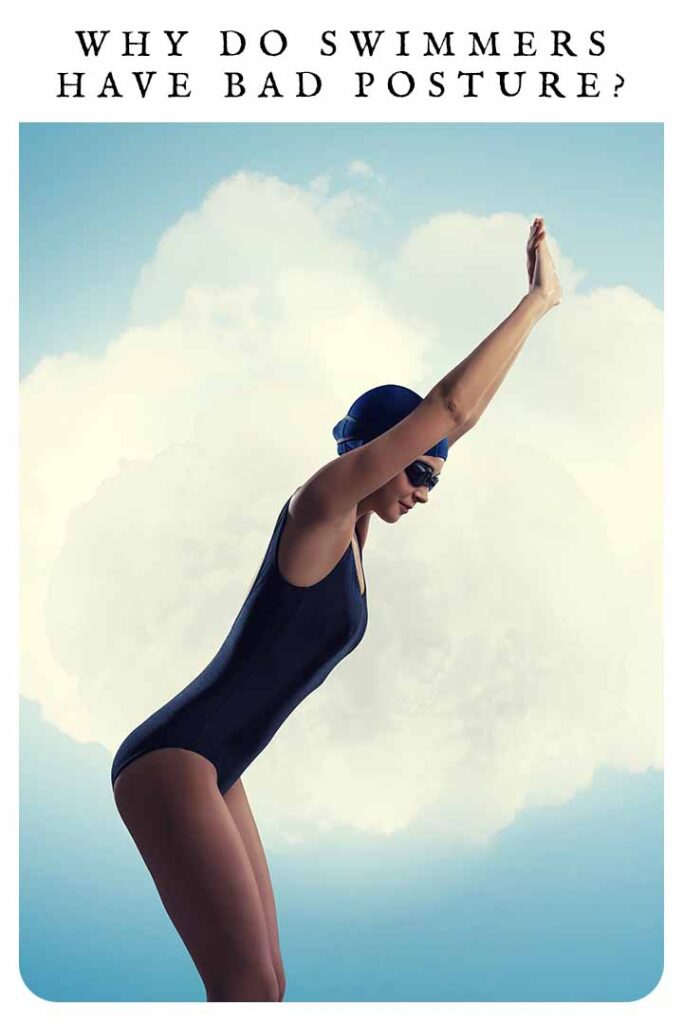
Stretches that Include Trunk Rotation Are Also Effective
Begin with bending one knee. Put one hand on your knee and spend 30 seconds rotating your spine and looking over your shoulder. Repeat three times.
Is Swimming Good or Bad for Posture?
While swimming, your core, back, and shoulder muscles will strengthen, which should help your posture. To stand straight, you need the power and endurance to support yourself, which is why core muscular strength is crucial. By strengthening the muscles surrounding your spine, you can walk with improved posture and reduce the pressure on your spinal column.
However, swimming lots on your front can overwork certain muscles, leading to a more hunched posture. So, incorporate some regular backstroke into your swimming routine to keep things balanced!
Is There a Swim Stroke that Improves Posture?
By using your back, shoulder, and neck muscles, all swimming strokes can help you improve your posture, but the backstroke is the best for posture. Keeping your head and shoulders submerged when swimming the backstroke while maintaining a straight body position would be best.
Like other swimming strokes, the backstroke tones the abdominal, leg, and arm muscles.
Its straight position and hip rotation also benefit people who spend their days slumped over a desk. An arched spine may create a great deal of tension and damage. It is essential to see a competent trainer to guarantee proper technique.
Other Characteristics of a Swimmer’s Body
A potentially hunched back isn’t the only change swimmers might notice. Here are a few other typical traits that professional or competitive swimmers can develop.
Hyperextension
Many swimmers have natural joint hyperextension. Hyperextension occurs when a joint rotates beyond its typical angle, enabling the limb to stretch past a straight line.
Knee and elbow hyperextension causes these joints to bend farther backward beyond straight. As a result, swimmers can capture more water with each stroke and kick more water with each kick.
Shock Absorption
Swimmers never experience shock absorption in the water. Gravity, on the other hand, may cause havoc on a swimmer’s joints when athletes exercise on land. Swimmers may have somewhat lower bone density than athletes who compete on land since they spend so much time in the water. The fundamental problem is that swimmers often cannot adequately absorb the stress sent up the legs while sprinting or landing after a jump.
Feet Flexibility
Swimmers kick their feet back and forth constantly. The tendons and ligaments in the foot and ankle become very flexible due to this repeated activity. Loose ankles may be problematic on land. Sprained ankles may result from landing on uneven terrain when jumping or running. Numerous exercises are available in swimming dryland training to strengthen ankles.
Bad Posture or Scoliosis?
When a person has scoliosis, their spine curves to the side. It affects 3 percent of people worldwide, primarily those between 10 and 20 years old. People sometimes think that mild cases of scoliosis are just bad posture, but they are not connected.
Swimming is a great way to work out for people with scoliosis because it is much easier on the spine than other high-impact sports. The buoyancy of the water minimizes the body’s weight and acting forces, which significantly relieves strain on the spine.
Swimming may help strengthen the muscles all over the back. While it can’t target the muscles around the spine’s curve, it can help relieve back discomfort from general muscular imbalance. Swimming will gradually enhance muscular endurance and flexibility, which will help people with scoliosis in their everyday physical activity outside the pool.
In Summary: Why Do Swimmers Have Bad Posture?
Known as “swimmers slouch,” a swimmer’s lousy posture is caused by muscle imbalance.
Front crawl and other strokes that demand you to be on your stomach frequently lead to swimmers developing a slouch. Repetition of these swim strokes leads to chest muscles tightening and back muscles lengthening, pulling the swimmer’s posture forward into a hunched position.
You can correct this lousy posture by stretching while holding a foam roller perpendicular to your spine. By strengthening the muscles surrounding your spine, you can walk with improved posture and reduce the pressure on your spinal column. All swimming strokes can help, but the backstroke is the best for posture. Its straight position and hip rotation also benefit people who spend their days slumped over a desk.
More About Swimmers and Swimming
- What’s considered a fast pace in swimming?
- Is backstroke a good exercise for fitness?
- Do professional swimmers shave their bodies?
- How a long torso can help you swim faster
- How to prepare to swim the English Channel
References
- Kluemper, M. (et al), ‘Effect of Stretching and Strengthening Shoulder Muscles on Forward Shoulder Posture in Competitive Swimmers’, Journal of Sport Rehabilitation (2006)
- Struyf, F. (et al), ‘Musculoskeletal Dysfunctions Associated with Swimmers’ Shoulder’, British Journal of Sports (2017)
- Matthews, M. (et al), ‘The Effects of Swimming Fatigue on Shoulder Strength, Range of Motion, Joint Control, and Performance in Swimmers’, Physical Therapy in Sport (2017)
- Monaghan, L. ‘Creating the Perfect Body: A Variable Project’, Body and Society (1999)

